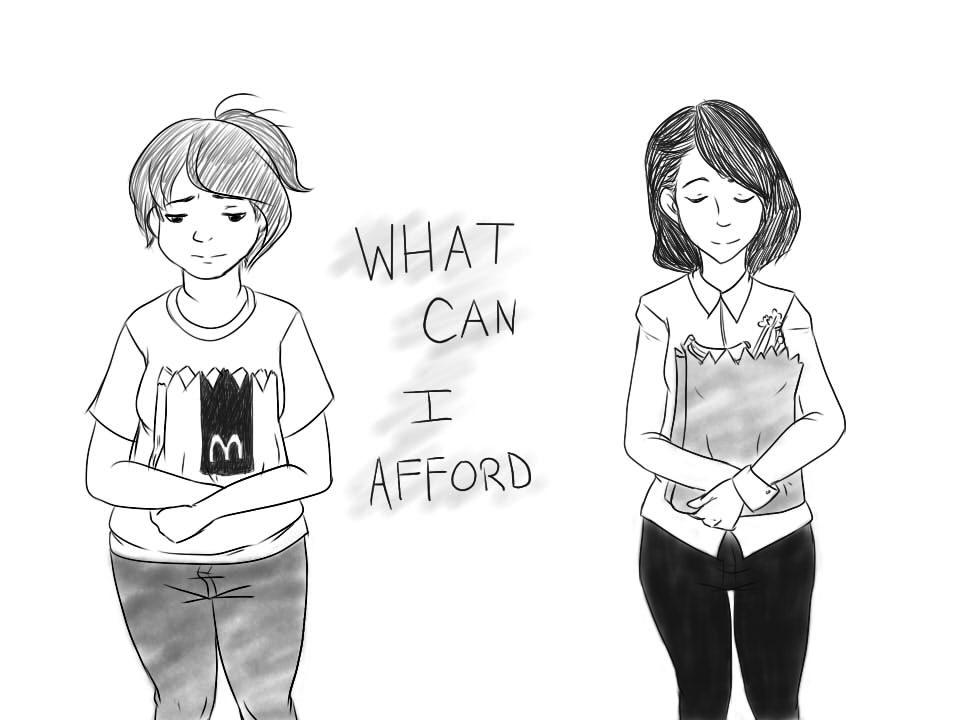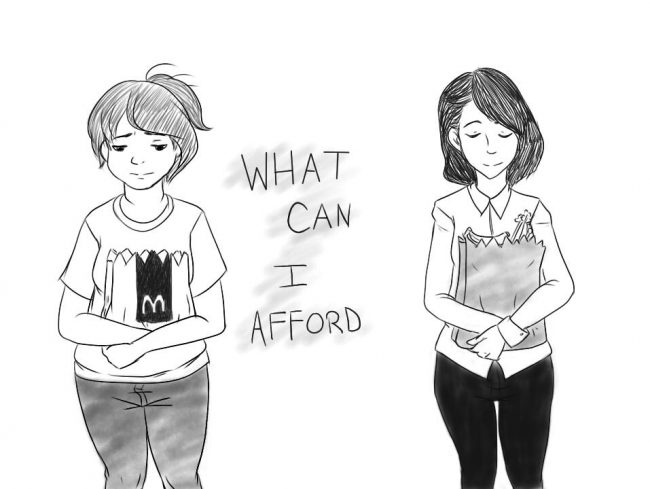You have two choices. You can walk over to the corner fast food joint to buy a family meal for only $5, or you can spend more than two hours to go to a grocery store, come home, and cook a lovely meal that will be devoured in seconds for $20.
You don’t have a car, you live off minimum wage and it is up to you to feed every single person living under your roof. Tough? Try nearly impossible.
Though eating unhealthy isn’t the top priority for many, sometimes it is a necessity when it comes to survival due to the low-cost of less-healthy foods.
Fast food chains know this and in their attempt to attract more consumers, they use vibrant, eye-appealing marketing on the streets of low-income neighborhoods.
Impoverished neighborhoods are commonly home to a less healthy environment, according to the United States Census Bureau. Obesity is rising in low-income communities, where inhabitants face higher rates of diabetes.
South Los Angeles is known to be a food desert. From 1992 to 2008, only five grocery stores were opened in the community. The U.S. Census Bureau finds that there are roughly one million people living in South L.A., a community predominantly inhabited by African-Americans and Latino/as.
The U.S. Department of Agriculture defines food deserts as “urban neighborhoods and rural towns without ready access to fresh, healthy, and affordable food.”
With the unavailability of fresh produce and easy access to unhealthy alternatives, it’s common for residents to opt for the least-recommendable choice.
Whenever I go shop for groceries to stock my kitchen, I usually search for the best bargain, as any college student would. Generally, I purchase healthier food items.
My total averages to be about $60, which will last me about two weeks. That’s a pretty good deal. Spending only $120 a month on food is something quite miraculous, especially if it’s healthy given our current economic crisis.
But that’s just me living off of a fairly decent paycheck.
Even for three people, $360 per month sounds reasonable. If each of the household members contribute to the income, they can pay their part. What if only two people worked? That’s still manageable.
Even if the option of purchasing fresh goods was more accessible, the cost for doing so may still be out of reach. The British Medical Journal finds that eating healthy can cost up to an additional $500 a year.
The census reports the average cost for rent in the U.S. to be $821. And the Pew Research Center finds that 3.55 million people work at or below the federal minimum wage level of $7.25 an hour. The same report finds that 64 percent of these individuals work part time.
In a best case scenario, working with California’s minimum wage full time will net you about $1,280 a month, before taxes. Taking into account the average rent price, a person would be left with roughly $460.
The problem begins with meeting basic bills, ranging from transportation, health and auto insurance, education, credit card bills and the list just piles up. All of these are necessities in today’s society.
In a hypothetical household, families would have to choose either to eat healthy or pay their bills to have a roof over their head.
Living with a small budget, it becomes more practical to go to McDonald’s and order a $1 breakfast sandwich just to get by your morning. Then you go back for lunch to get a McChicken sandwich and a large drink for about $3.
You’ve managed to feed yourself for the day based on your budget. But there’s always the question of what to eat tomorrow and for the rest of the week.
The high cost of healthier foods is an outcome of the complex policies taken into action within the food processing industry, according to the British Medical Journal,
A report compiled by the Food Research and Action Center (FRAC) finds that it is much cheaper to buy refined grains, added sugar and fat than healthy food items. Lower-income people try to maximize their dollar spent with purchasing items that are filling — the more calories per dollar, the better.
If we can’t get our fresh food prices to go down, then shouldn’t we be trying to figure out a way to make our income levels rise?
Unfortunately, our friends in higher positions aren’t easily fooled out of their money, not even if it involves representing the very people who put them in those positions in the first place.
Remember, money makes the world go round. Without a doubt, it also makes you go wrong.







